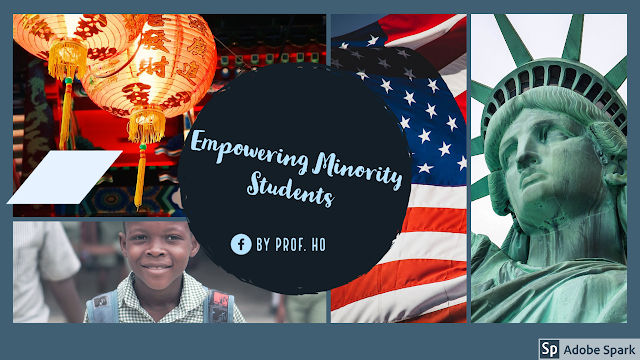One of the advantages of Multicultural Education is that you teach students to think in multiple perspectives. When students think in multiple perspectives, they learn to question the status quo thus developing a student's critical thinking skills. Having students realize that US history books are written in a Euroo-centric style opens their eyes to seeing history from another point of view.
Many history books in the US were written from the Eurocentric point of view--that is from a European American point of view. White Americans are seen as heroes and the major movers and shakers in American history.
To help minority students realize that they too have a part in American history, teachers need to teach their students US history from the minority student's point of view to limit the impact of the Eurocentric point of view.
Students used to celebrate Columbus Day as the day that Columbus discovered America. If you were to re-write that same historical event from the Native American point of view, you would call that day, Indigenous Day and tell what impact Columbus' arrival had on Native Americans. This is an example of teaching students multiple perspectives. When we incorporate the culture of many students into our curriculum, this is called multicultural education.
Multicultural education refers to any form of education or teaching that incorporates the histories, texts, values, beliefs, and perspectives of people from different cultural backgrounds. At the classroom level, for example, teachers may modify or incorporate lessons to reflect the cultural diversity of the students in a particular class. In many cases, “culture” is defined in the broadest possible sense, encompassing race, ethnicity, nationality, language, religion, class, gender, sexual orientation, and “exceptionality”—a term applied to students with specialized needs or disabilities.
Generally speaking, multicultural education is predicated on the principle of educational equity for all students, regardless of culture, and it strives to remove barriers to educational opportunities and success for students from different cultural backgrounds. (Great School Reform Partnership, Glossary of Education Reform)
Both Maria Sweeney (1997) and Sharon Miller (2001) challenged their 4th grade white suburban students to consider alternate points of view of events to look for missing or silenced voices. (131) The 4th grade students had a great time rewriting historical events from different cultural points of view based on the cultural backgrounds of the students in the class.
When I taught my Asian American class to non-Asian class of students, I asked them to re-write the Japanese internment experience from the Japanese point of view.I asked them to rewrite certain Western fairy tales from the Asian point of view. In a Western fairy tale, the rebellious young man gets the girl after defying his parent's wishes. In an Asian fairy tale, the young man dumps his love, sacrifices his happiness to obey the wishes of his elderly parents. When students rewrite a Western fairy tale into an Asian one, they learn multiple points of view for that same fairy tale.
They learn how in Asia it is the group/family that is more important than the individual's happiness while in America, it is the individual's happiness that overrides the wishes of the parents. I tell my students no culture is superior to the other, they are just different.
I enjoyed teaching Asian American Literature because it gave me a chance to teach others what it is like to be Asian American and to teach others the difficulties I have being considered too Asian in America and then being considered not Asian enough when I am in Taiwan.
I always felt that teaching about my culture made me feel empowered and made me feel included in the fabric of American society and not as an outcast.
When I left AMU, I missed teaching that Asian American class where I felt so at home with my students and so at home teaching about my culture.
I love teaching students alternate points of view to reflect the views of minority students and to make minority students feel like they are a part of America, because in truth, their ancestors are just as responsible for making America this great country as those of Native Americans and European Americans.




No comments:
Post a Comment